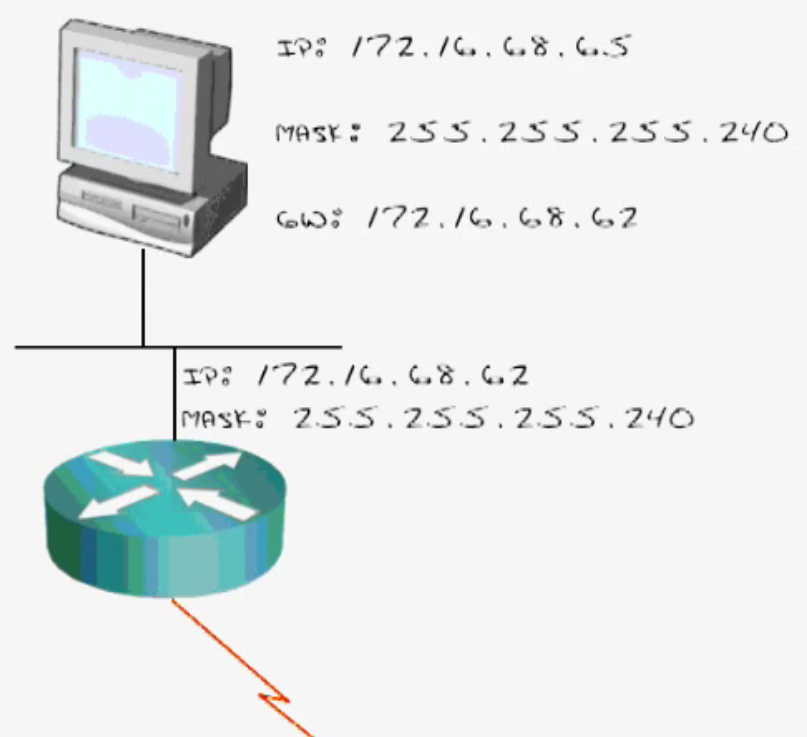Reverse Engineering is the most common form of subnetting. You’ll start with an IP address and Subnet Mask.
Is this IP Address Valid?
What Subnet Range does it belong to?
Is it on the same subnet as the others plugged in?
Scenario #1: 192.168.1.127 / 255.255.255.224
/27 = 11100000 = 32 Increment
- 192.168.1.0 – 192.168.1.31
- 192.168.1.32 – 192.168.1.63
- 192.168.1.64- 192.168.1.95
- 192.168.1.96- 192.168.1.127
This address is NOT valid for a Host! It is the Broadcast Address for the 192.168.1.96 network!
Scenario #2: 172.16.68.65 / 255.255.255.240 / GW 172.16.68.62
- .240 = 11110000 = Increment = 16
- 172.16.68.0 – .15
- .16 – .31
- .32 – 47
- 172.16.68.48 – .63
- 172.16.68.64 – .80
This example fails because the PC is on a different network than the Default Gatway.
Under this example, the PC would need a Default Gateway to reach its Default Gateway!
Subnetting Examples Download
The Great Exception
- Because Binary begins counting from Zero
- These NETWORK values may throw off calculations:
2, 4, 8 , 16, 32, 64, 128 - These HOST values may throw off calculations:
3. 7, 15, 31, 63, 127 - To play it safe, always:
- Subtract 1 when finding Networks.
- Add 1 when finding Hosts
To prevent these “perfect storm” calculations, always:
Subtract 1 when calculating for Networks
Add 1 when calculating for Hosts
Subtract 1 when calculating for Networks
Add 1 when calculating for Hosts
